Sagittarius, resembles the shape of a Archer, when stars in this constellation are imaginarily connected, as per Indian mythology!
Where should I see…Scorpius and Serpens Cauda, are towards west of Sagittarius constellation. If you move your eyes towards east, you will see another constellation named Capricornus and Microscopium. In the North of Sagittarius, you will find Aquila and Scutum and in South, Telescopium and Corona Australis constellations respectively. Sagittarius is between celestial equator and South Pole, and so is fully part of Southern Hemisphere.
towards east, you will see another constellation named Capricornus and Microscopium. In the North of Sagittarius, you will find Aquila and Scutum and in South, Telescopium and Corona Australis constellations respectively. Sagittarius is between celestial equator and South Pole, and so is fully part of Southern Hemisphere.
It covers up 867 square degree area of the sky. Area wise it is 15th largest constellation in the sky.
When and What can I see…It is on the zodiacal belt and hence is the 9th zodiac on the zodiac belt. Sun enters in this constellation from 18nd December to 18th January. It is best observed during March to October, as seen from India.
from 18nd December to 18th January. It is best observed during March to October, as seen from India.
All you need is your naked eyes other than clear skies to see 217 stars of this constellations, as they are the one which are brighter than the lower limit of our naked eyes (i.e. 6.5 apparent magnitude) to see faintest stars. The brightest star of this constellation is Kaus australis. The brightest star in this constellation is Epsilon Sagittari. The Hindu name of the star is Purvashadha which is also known as Nakshatra (lunar mansion). There is other nakshatarsa in this constellation named Uttarashadha (Nunki)
Constellations are made up of single, binary (apparent and absolute), multiple and variable stars. Out of total 217 stars of different types, here is the list of 20 brightest stars as per their nature:
| Binary / Multiple Star system | Variable Stars |
Binary/multiple and Variable Stars | Single stars |
| Kaus australis | Alnasl | Albaldah | Kaus borealis |
| Nunki | 1 | Polis | Rukbat |
| Ascella | – | – | Arkab posterior |
| Kaus media | – | – | 5 |
| Arkab prior | – | – | – |
| 1 | – | – | – |
| 6 | 2 | 4 | 8 |
Mythology stories…In Indian mythology, it is said that when Rishis and Philosophers first saw Devyanitaramandal (Sagittarius constellation) which is named as Devyani by them, actually looked like a shape of a beautiful princess whose hands were tied. Actually, there are many stories associated with Devyani. But one of them is that, Devyani is daughter of Shankaracharyaji and Urjastavini. There are stories of Devyani’s friend and foe relation with Sharmishtha, and about the marriage of Devyani and Yayati.
(Sagittarius constellation) which is named as Devyani by them, actually looked like a shape of a beautiful princess whose hands were tied. Actually, there are many stories associated with Devyani. But one of them is that, Devyani is daughter of Shankaracharyaji and Urjastavini. There are stories of Devyani’s friend and foe relation with Sharmishtha, and about the marriage of Devyani and Yayati.
Deep Sky Objects…

Arches Cluster & Quintuplet Cluster || Dense Globular Cluster

Barnards Galaxy or NGC 6822 || Irregular Galaxy

Box Nebula || planetary Nebula
All the stars that we see naked eyes, all belong to our own, Milky way galaxy (Akash Ganga Tara Vishv). Bright stars can be seen naked eye and faint one through telescope. But the curtain of sky that we see in 2D is actually a huge universe we are talking about, with 3 dimension. There are many nebulous objects visible in every constellations. They differ widely by distances and nature. Like Emission Nebula, Reflecting Nebula, Absorption Nebula, Star Birth Nebula, Supernova Remnants (SNR) and Open Starscluster which are within the disk of our own Milky Way galaxy. Globular cluster are also found, which are in the halo of our galaxy and some most distant objects like galaxies are also visible through telescope. Such objects are defined as “Deep Sky Objects”.
In this constellation there are 119 such different types of Deep Sky Objects observed. Below is the list of 20 brightest Deep Sky Objects:

Eye of Sauron Nebula || Planetary Nebula

Henize-3-1475 || Planetary Nebula

Hurt 2 or 2MASS-GC02 || Globular Cluster
| Galaxy | Open Cluster | Globular Cluster | Nebula | Supernova Remnant | |
Naked eye visibility | – | M24(Small Sagittarius star cloud) | M22(great sagittarius cluster) | M8(Lagoon nebula) | – | |
M25 | 1 | |
M23 | M55 | |
M21 | – | |
Visible through Telescope | Barnard’s galaxy | M18(Black swan) | M28 | 1 | – | |
|
– | 5 | M54 | M17(Horseshoe nebula) | – | |
|
– | – | M75 | | – | |
|
| 1 | 10 | 5 | 4 | – | |

Lagoon Nebula or M8 || Emission Nebula

Little Gem Nebula or NGC 6818 || Planetary Nebula

M25 or IC 4725 || Open Cluster
 towards east, you will see another constellation named Capricornus and Microscopium. In the North of Sagittarius, you will find Aquila and Scutum and in South, Telescopium and Corona Australis constellations respectively. Sagittarius is between celestial equator and South Pole, and so is fully part of Southern Hemisphere.
towards east, you will see another constellation named Capricornus and Microscopium. In the North of Sagittarius, you will find Aquila and Scutum and in South, Telescopium and Corona Australis constellations respectively. Sagittarius is between celestial equator and South Pole, and so is fully part of Southern Hemisphere. from 18nd December to 18th January. It is best observed during March to October, as seen from India.
from 18nd December to 18th January. It is best observed during March to October, as seen from India. (Sagittarius constellation) which is named as Devyani by them, actually looked like a shape of a beautiful princess whose hands were tied. Actually, there are many stories associated with Devyani. But one of them is that, Devyani is daughter of Shankaracharyaji and Urjastavini. There are stories of Devyani’s friend and foe relation with Sharmishtha, and about the marriage of Devyani and Yayati.
(Sagittarius constellation) which is named as Devyani by them, actually looked like a shape of a beautiful princess whose hands were tied. Actually, there are many stories associated with Devyani. But one of them is that, Devyani is daughter of Shankaracharyaji and Urjastavini. There are stories of Devyani’s friend and foe relation with Sharmishtha, and about the marriage of Devyani and Yayati.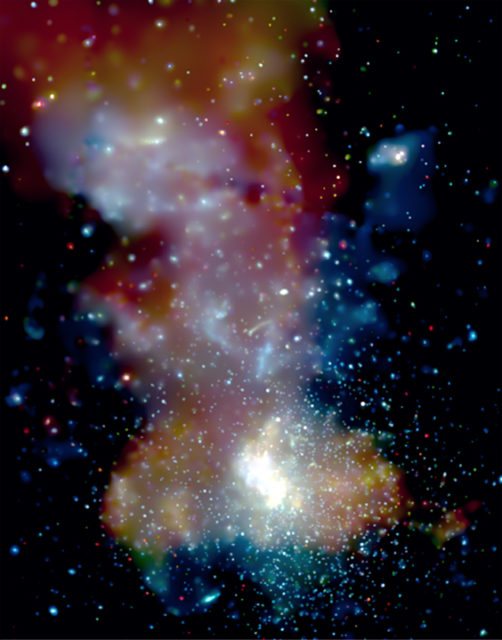 Arches Cluster & Quintuplet Cluster || Dense Globular Cluster
Arches Cluster & Quintuplet Cluster || Dense Globular Cluster
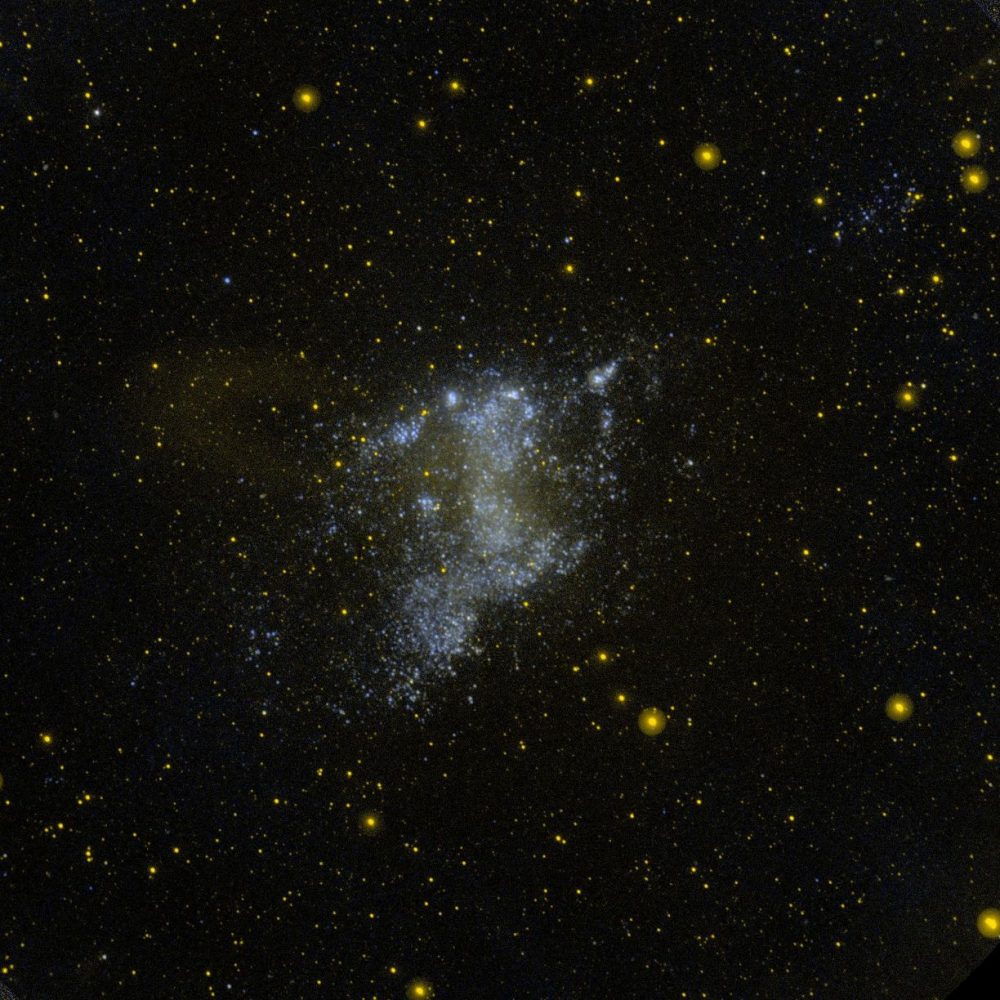 Barnards Galaxy or NGC 6822 || Irregular Galaxy
Barnards Galaxy or NGC 6822 || Irregular Galaxy
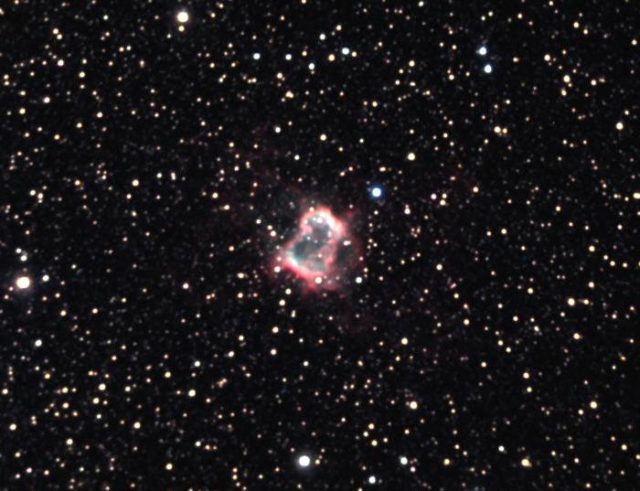 Box Nebula || planetary Nebula
Box Nebula || planetary Nebula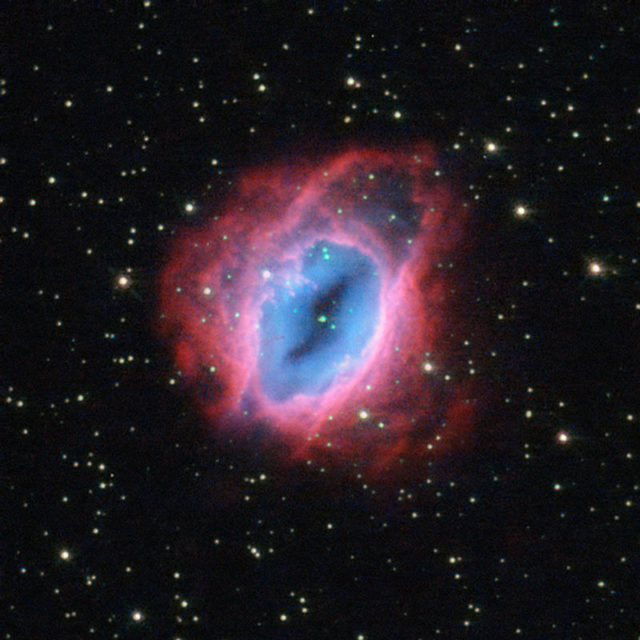 Eye of Sauron Nebula || Planetary Nebula
Eye of Sauron Nebula || Planetary Nebula
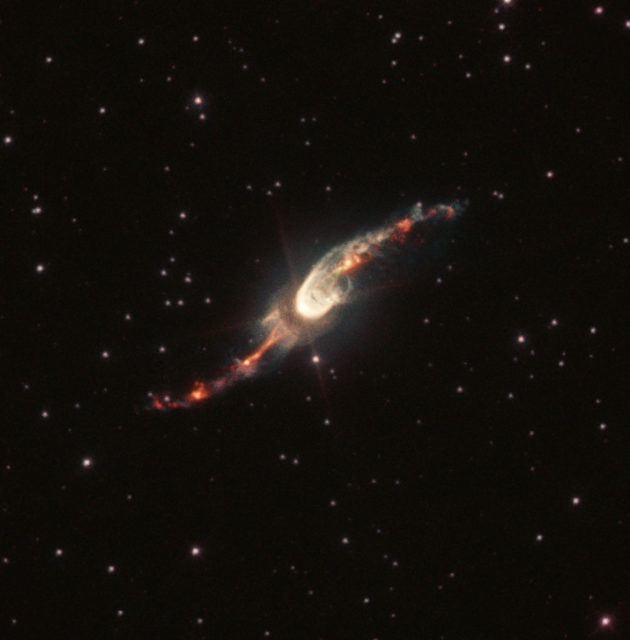 Henize-3-1475 || Planetary Nebula
Henize-3-1475 || Planetary Nebula
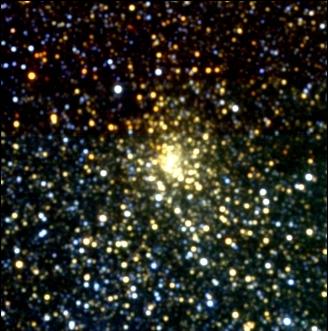 Hurt 2 or 2MASS-GC02 || Globular Cluster
Hurt 2 or 2MASS-GC02 || Globular Cluster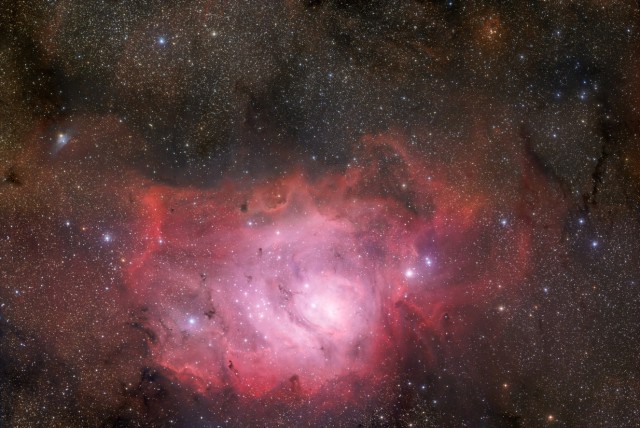 Lagoon Nebula or M8 || Emission Nebula
Lagoon Nebula or M8 || Emission Nebula
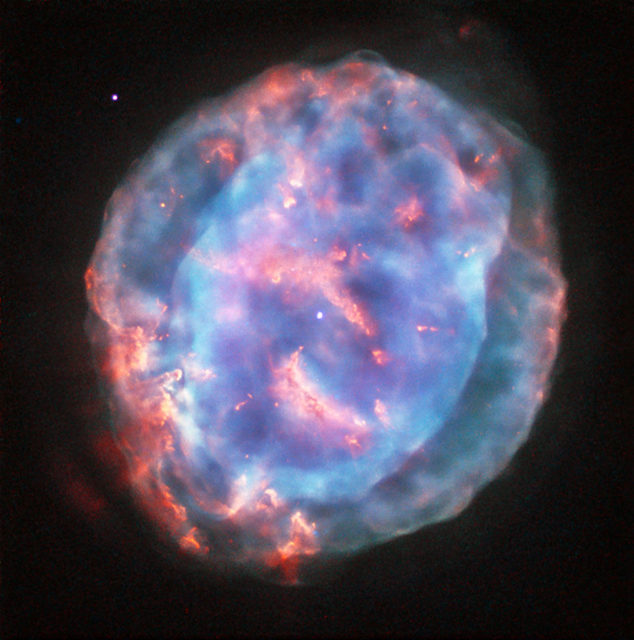 Little Gem Nebula or NGC 6818 || Planetary Nebula
Little Gem Nebula or NGC 6818 || Planetary Nebula
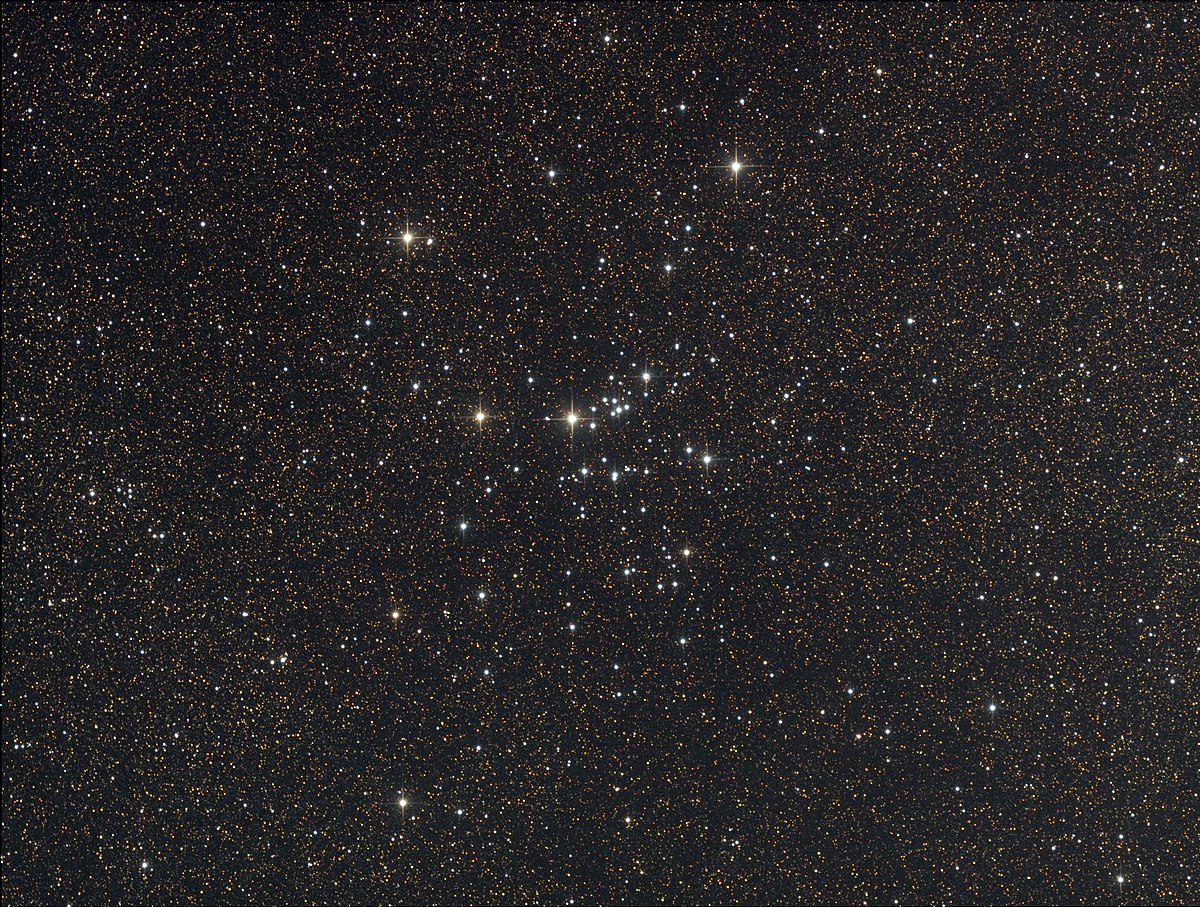 M25 or IC 4725 || Open Cluster
M25 or IC 4725 || Open Cluster


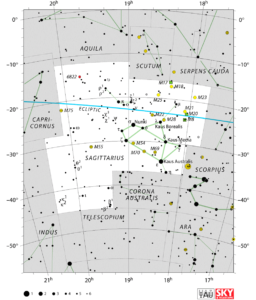 towards east, you will see another constellation named Capricornus and Microscopium. In the North of Sagittarius, you will find Aquila and Scutum and in South, Telescopium and Corona Australis constellations respectively. Sagittarius is between celestial equator and South Pole, and so is fully part of Southern Hemisphere.
towards east, you will see another constellation named Capricornus and Microscopium. In the North of Sagittarius, you will find Aquila and Scutum and in South, Telescopium and Corona Australis constellations respectively. Sagittarius is between celestial equator and South Pole, and so is fully part of Southern Hemisphere.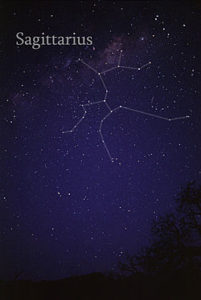 from 18nd December to 18th January. It is best observed during March to October, as seen from India.
from 18nd December to 18th January. It is best observed during March to October, as seen from India.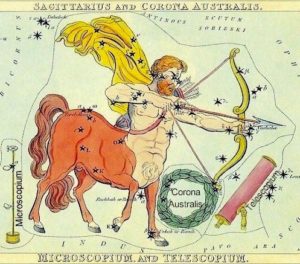 (Sagittarius constellation) which is named as Devyani by them, actually looked like a shape of a beautiful princess whose hands were tied. Actually, there are many stories associated with Devyani. But one of them is that, Devyani is daughter of Shankaracharyaji and Urjastavini. There are stories of Devyani’s friend and foe relation with Sharmishtha, and about the marriage of Devyani and Yayati.
(Sagittarius constellation) which is named as Devyani by them, actually looked like a shape of a beautiful princess whose hands were tied. Actually, there are many stories associated with Devyani. But one of them is that, Devyani is daughter of Shankaracharyaji and Urjastavini. There are stories of Devyani’s friend and foe relation with Sharmishtha, and about the marriage of Devyani and Yayati.